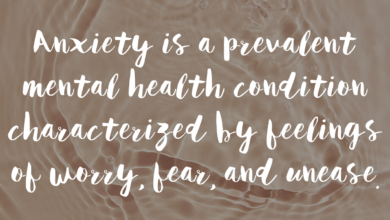Exposures for OCD: Getting Creative

Dance around the bedroom in your underwear, babysit a friend’s kids, relish the “5-second rule”, change your jewelry every few hours, visualize yourself dying of AIDS or cancer or being arrested and sent to prison. Strange requests from your therapist, some even morbid. I sometimes joke with clients that I do a good job of torturing people for a living. An attempt to highlight how important humor can be when you are a behavioral therapist. We have the critical knowledge to understand that these methods are effective, otherwise, how could we produce these very bizarre, albeit creative assignments for our clients?
Years ago, I attended, what turned out to be, one of the most valuable workshops for providers who utilize various forms of exposure in treatment. It focused on helping therapists address their own discomfort, discussing some wacky exposure ideas with clients. I remember the speaker encouraging us to be ourselves in session, for better or worse. I have realized, looking back, this simple, but critical piece of advice, gave us permission to acknowledge the inherent weirdness in some of the treatment we “prescribe.” At least I believe that’s what it did for me. I’m a fan of humor, in life and in therapy. Therapy, like life, can be hard…. Humor helps. For me, it eases the tension of asking a nurse, who is convinced, no matter how careful she is, that she will be infected with a deadly virus by her next patient, to listen to a recorded imaginal exposure, describing her rapidly declining health and the toll on her family. “Just what you were hoping to do this week…. Along with a massage and day at the spa, a dream come true.” Of course, this may be an extreme example, but for someone whose OCD is telling them that changing their necklace may put their daughter’s life in danger, asking them to change their jewelry every few hours, can feel just as distressing. Visualizing themselves getting arrested, put on trial, or going to prison, has to do with leaving the scene of an accident. This is for the clients who fear they have hit someone, after going over a pothole. Along with minimizing the ritual of driving back to check, an imaginal exposure helps build tolerance for this thought, as a solid start in the treatment process.
On the lighter side, asking a 12-year-old client, who stopped changing in her bedroom because of an intrusive thought that there was a camera there, to dance around in her undershirt, got a big smile and a laugh, as well as some highly effective results over several weeks. Now she’s back to changing in her bedroom. Relishing the “5 Second Rule”, was for a young man, washing his hands 30 times a day, a reminder to drop his grape or pretzel on the floor before eating it, and of course no washing. ….and babysitting for a friend’s kids, was a double-duty exposure. Once for POCD thoughts, along with shopping at kids’ stores, and another time, for an adolescent with Emetophobia…. young kids, as we know, tend to be germ magnets built in exposure, which comes with hourly pay.
The ability to be ourselves with clients makes it so much easier to connect, to be real about how challenging treatment is, and enlist their help to ensure that whatever the exposure is, its something they can tolerate, trust in, and most importantly, begin to experience relief from their intrusive thoughts and the compulsions that may dominate their lives. My perspective has shifted, to appreciate the fact that I get to be creative in my work. We know how sneaky anxiety and OCD can be. At our best, we are all part detective, in getting to the core of each person’s driving obsession or fear and collaborating with them to tailor exposures that will work best…… detectives, creators, collaborators, healers. We are lucky, indeed. In short, the lesson is, don’t be afraid to be yourself, and think outside the box.
What’s the most challenging fear or obsession you’ve encountered as a provider? What are some of the most creative exposure ideas you’ve used with your patients?
Source link
#Exposures #OCD #Creative

